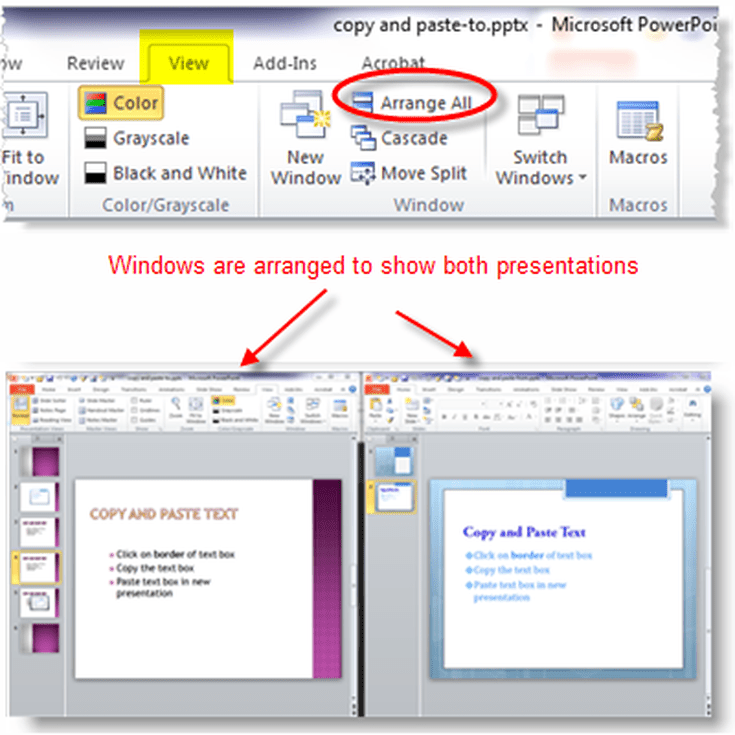Video To Powerpoint Macros

For years I have been using Microsoft PowerPoint as a powerful and professional presentation and animation software. It seems to me, that its capabilities are widely underestimated, to say the least. Perhaps even by its own developers.
I'd like to know where I can find advanced video export settings in PowerPoint 2013. Currently, the possibilities are quite limited, with an export resolution of 1280x720 being the maximum; the framerate leaves much to be desired as well. Is there a free, convenient way of producing an HD quality video (including all the animations) without quality loss, using any Microsoft Office program? Thank you for your support. Arne is working in C# in DotNet which if you are not a coder isn't going to work for you. Try: This assumes the presentation in 16:9 Open the vb editor (ALT f11) INSERT >Module and paste in the code below Sub MkVideo() If ActivePresentation.CreateVideoStatus ppMediaTaskStatusInProgress Then ActivePresentation.CreateVideo FileName:=Environ('USERPROFILE') & ' Desktop test.wmv', _ UseTimingsAndNarrations:=True, _ VertResolution:=1080, _ FramesPerSecond:=25, _ Quality:=100 Else: MsgBox 'There is another conversion to video in progress' End If End Sub Go back to the normal edit window VIEW >Macros >Run It may take quite a while!
The video will be on the desktop called test.wmv www.pptalchemy.co.uk.
Macros can be very useful but often go unused. Having always been somewhat of a hack, I do not like to take no for an answer. Macros have helped me work around problems which seemed unsolvable. Although this post does not contain a single macro file, I plan to write a few posts about specific macros to make an instructional designer’s job a little easier. I will be focusing on PowerPoint as the venue for these macro blog posts, but you can use this info to use Macros in most of MS Office. In this post, I will cover a few macro basics: • • • • • What is a Macro? According to dictionary.com, a macro – short for macroinstruction – is an instruction that represents a sequence of instructions in abbreviated form (). An example of a real-world macro would be going to work. If my abbreviated form, macro statement is going to work, then my sequence of instructions would really be: • Gather work items • Open car door • Close car door • Put on seat belt • Place key in ignition and turn • Place car in reverse • etc, etc, etc, until I arrive at work Someone will ask me to perform the going to work command instead of telling me each and every step of going to work. At the end of completing the instruction going to work, my physical appearance at work is proof that the macro ran successfully.
If I did not make it to work, then going to work failed, and “troubleshooting” ensues 🙂 Macros are pretty much the same thing. A macro can type for you, add objects, set formatting, open files – essentially anything you can do on a computer, a macro can redo for you. They can be simple commands (1. Move down one line), or they can be complicated – capable of making decisions based on data you provide. Burzum Sol Austan Mani Vestan Rar here. () The Macro File Type. This is a macro in Notepad. A file with the.bas extension can be opened in PowerPoint and run as a macro.
Macros are written in any text editor – I usually use Notepad. When done with my text file, I change the extension from.txt to.bas.
I want to export a video from powerpoint using VBA. This video was uploaded from the PC and not using links. I saw that this is possible for the images using this. The macro recorder, which automates frequent tasks, isn't available PowerPoint. But you can use Visual Basic for Applications (VBA) to create or edit macros.
Not a programmer? Part of the beauty of macros is the ability to share them. You will likely find little snippets of code online, and you will be copy/pasting them into Notepad or some other text editor (or directly in the Visual Basic editor). However, please be cautious about where you get macros!



